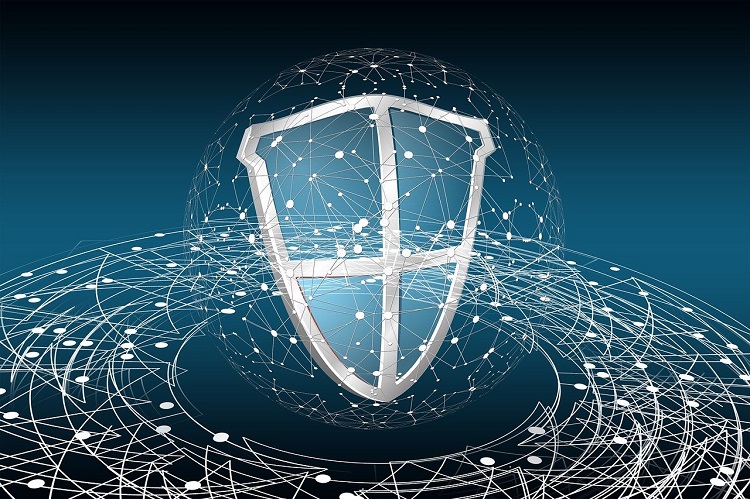Within the age of digitalization, where almost all data is put away online and commerce forms, data breach are continuously an approaching danger. It is becoming apparent that the castle and moat security show is not satisfactory in ensuring information foundations.
Companies are presently prioritizing cyber security by joining security frameworks and implementing security arrangements to protect delicate information, which is why the corporate world is rapidly embracing stiffer security models such as zero trust
The Zero Trust security framework is a cybersecurity architecture that operates under the premise that no entity should be trusted by default, whether it be inside or outside the network perimeter.
Rather, before allowing access to resources, each access request is examined. This strategy tackles the drawbacks of conventional security methods, which frequently depend on network perimeter defenses like firewalls and virtual private networks (VPNs).
Previous security models were based on the belief that all entities in an organisation could be trusted. This approach surely is not secure and safe for both the clients and the network system, as more and more threats are evolving.
Thus, a zero-trust model,
- Identifies both inside and outside the network parameter.
- Each request can only be approved, authenticated, and encrypted before it can be allowed access.

Also Read: Top AWS Security Services for Protecting Your Cloud Infrastructure
Since its inception, zero trust has become one of the more popular concepts in cyber security The implementation of the zero-trust security model or architecture requires a combination of modern technologies.
- AWS Identity and Access Management
- AWS Multiple factor authentication
- AWS Key Management Service
These technologies will verify the user’s identity, allow authorised user to access the documents otherwise deny their authority with alarms to alert the working environment. The main goal of the zero-trust architecture is to prevent breaches and curb damage of the system.
Principles of Zero trust

Related: Top AWS Security Services for Protecting Your Cloud Infrastructure
Ongoing Validation:
Prior to allowing access to resources, always authenticate and authorize each user, device, and network flow.
Lowest Access Privilege:
Give users only the minimal amount of access they need to do their duties. In the event that an account is compromised, this reduces possible harm.
Small-Segment Organization:
Split apart the network and divide it into smaller, more isolated sections to prevent intruders from moving laterally. Access limits and security protocols might be unique to each section.
Presume Breach:
This proactive approach promotes ongoing surveillance, quick threat identification, and timely reaction.
Management of Identity and Access (IAM):
- AWS IAM forms the heart component of the zero trust model. One important element is multi-factor authentication (MFA).
Division of a Network:
- Make use of separate AWS features such as firewalls, software-defined perimeters (SDP), and virtual private networks (VPNs).
Security of Endpoints:
- safeguarding network-connected devices, including PCs, cellphones, and Internet of Things gadgets. ensuring that before giving access, endpoints adhere to security regulations.
Data Security:
- Data is encrypted both in transit and at rest to prevent unwanted access. ensuring that apps and people with permission can only access data.
Constant analytics and monitoring:
- Using analytics and real-time monitoring to identify and React promptly to any questionable activity. utilizing artificial intelligence and machine learning to find patterns that point to possible dangers.
Automation:
- Automating regular security checks and debugging keeps systems free around the clock.
AWS Services for Implementing Zero Trust
AWS offers a suite of services that can help organizations implement a zero-trust architecture:
AWS Single Sign-On (SSO)
- Single sign-on, credentials to be passed between users, groups across AWS accounts only.
Amazon GuardDuty
- Real-time tracking to prevent any suspicious activity that may potentially harm accounts and workloads in AWS.
AWS Network Firewall
- Use network firewalls which are stateful and are managed to ensure that they monitor and filter movements between the various defined segments.
Amazon Virtual Private Cloud ( Amazon VPC )
- Employ VPC such as native subnets and access domains to create secure network and implement micro-segmentation using security groups and network ACL.
AWS PrivateLink
- Integrate securely the upper-tier internet services located on AWS to the native infrastructure of other organizations without exposing the data to the public internet.
AWS CloudTrail
- Inspect all API accesses in order to keep track of and audit the flow that takes place in the AWS environment.
AWS Systems Manager
- Patch management and configuration: Implement patch management on all hosts so that there is compliance with security policy.
AWS Key Management Service:
- Data Encryption Data in motion and data at rest must be encrypted; customer-managed encryption keys are allowed.
Best Practices for Zero Trust on AWS
Engineers should follow these best practices to install Zero trust into their system.
- Ensure high levels of two-factor authentication and authorisation
- It is recommended to apply IAM policies and quotas for controlling access to resources and requiring MFA of all accounts.
- Integrate AWS SSO so that different accounts and applications can ease single sign-on or login process.
- This means that Network Segmentation has to be put in place and Micro-Segmentation as well.
- Amazon VPC allows you carve out separate virtual spaces for various applications and services.
- It is recommended to use security groups and network ACLs for isolation between segments, and it is also considered best practice to limit user access to only the resources they need to interact with.
- Check and continually analyze logs permanently
- Access the necessary logs to conduct analysis with AWS CloudTrail and Amazon Guard Duty turned on.
- In the case of emerging risk factors, establish alarms and notifications to be dealt with through Amazon CloudWatch.
- Employ AWS KMS for encrypting data at rest within the AWS infrastructure as well as data in transit.
- Specifically, guarantee that any object put in S3 buckets is encrypted with SSE or, at least, client-side encryption.
Automate Security and Compliance
You end up using AWS Systems Manager to automate the process of patch management as well as configuration compliance.
Use AWS Config in a continuous manner to determine, examine, and review the settings of and in your AWS environment.
Incident Response and Mitigation Guidelines:
Creation of specific Incident Response Plan specific to AWS environment and infrastructure and updating periodically.
AWS Lambda and AWS Step Functions can be used to take necessary responses regarding incidents.
Security Management: Operations, Assessments and Audits
Security assessment with AWS should be performed after the creation of the architecture and involves constant monitoring to check for and mitigate vulnerabilities using AWS Security Hub.
Conduct regular checks regarding the IAM roles and privileges and conformity of the established principle of least privilege.
Conclusion
Implementing Zero Trust using AWS services entails a systematic process that focuses on data persistence and continuous validation of approvals and permissions that limit access while preventing malicious actors from infiltrating the system.
If implemented correctly, organizations can learn from AWS’s great set of features and security tools to ensure threats and dangers do not endanger critical assets in an ever-changing, complicated environment. It must also be noted that deploying Zero
Trust on AWS not only improves the security of organizations ‘ digital systems but also provides organizations with the capabilities to respond to emerging security threats to their critical IT assets and systems.
Related Posts:
- The Importance of Cloud Security: Best Practices and Strategies
- 7 Common Mistakes to Avoid When Hiring Cyber Security Consulting Services
- Cybersecurity Solutions for Executive Protection
For more data engineering updates, follow us on Facebook, Twitter, and LinkedIn.




